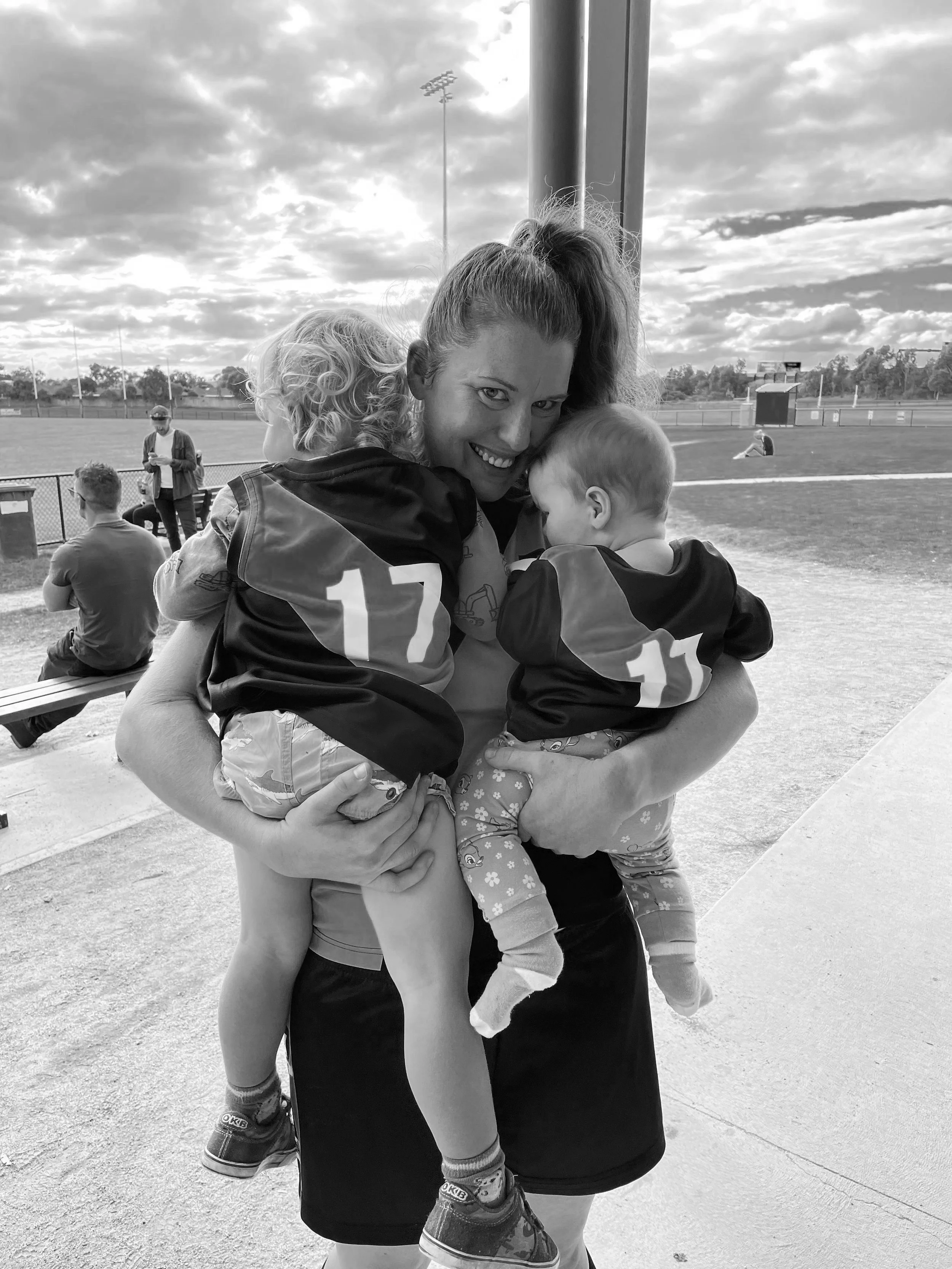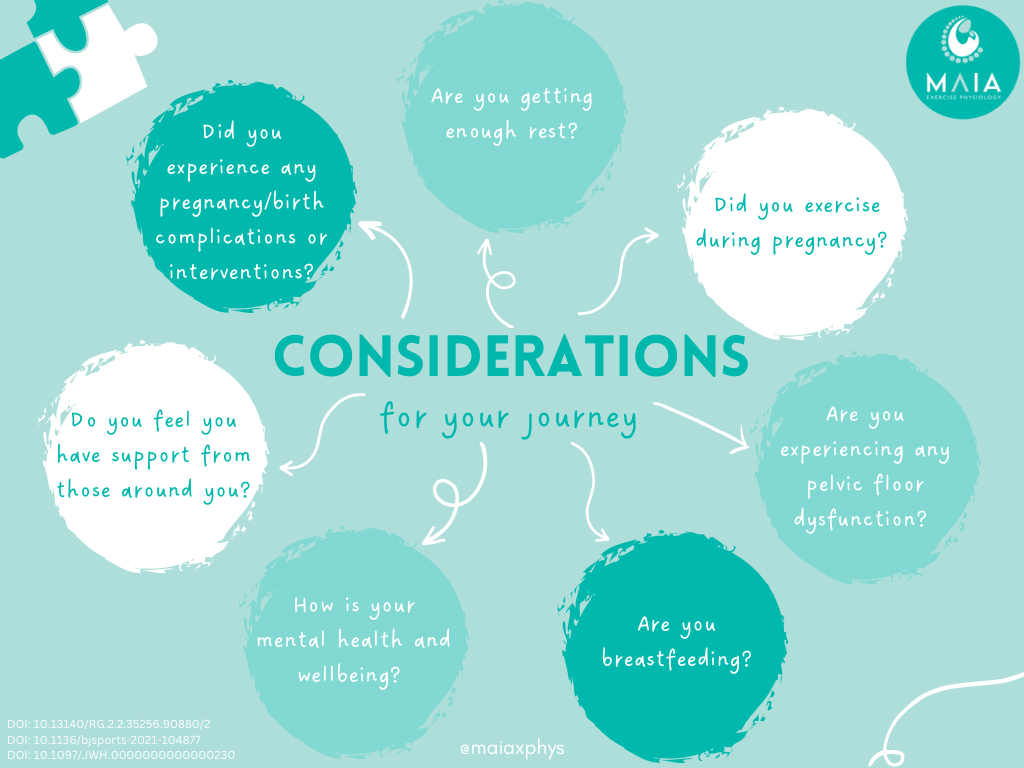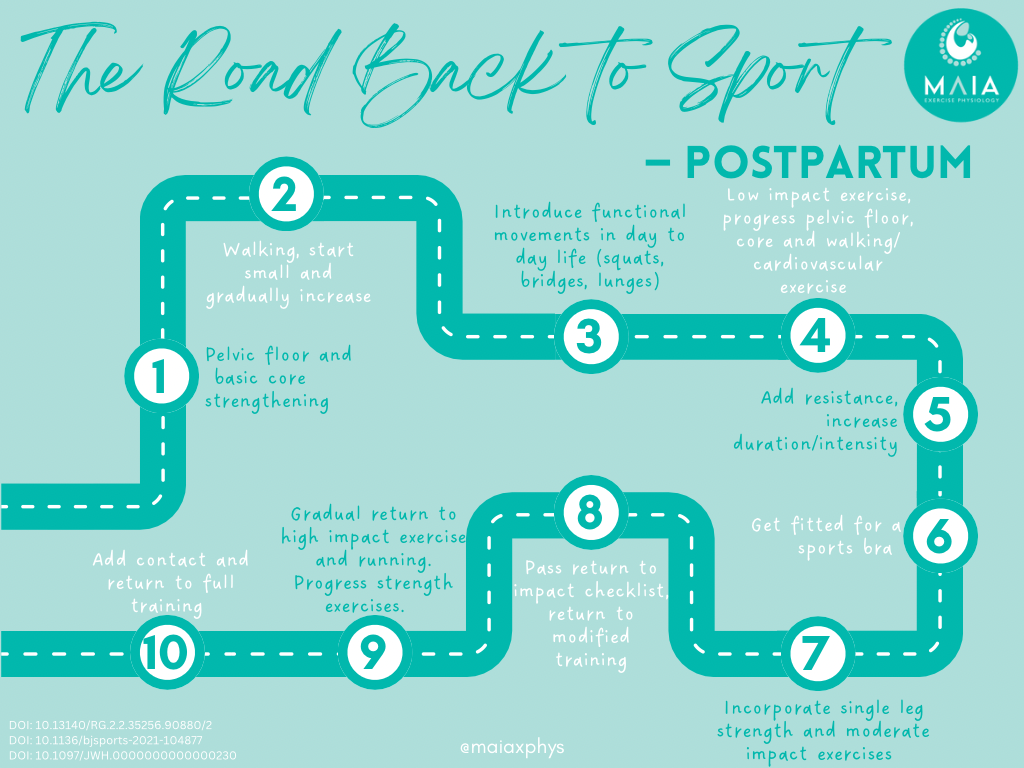Returning to Sport Postpartum
Serena Williams. Allyson Felix. Jana Pittman. Jess Stenson. Daisy Pearce.
These names are just a few of the many thousands of athletes who have proven that having a baby doesn't have to mean the siren sounds on your sporting life.
Postpartum does not have to mean the end of performance.
Many women have even seen improvements compared to their performance pre-pregnancy.
The same goes for you! Whether you are wanting to return to (or begin) recreational activities, community competition or elite sport, in most cases, you can - but the path you take to get there is so important.
Each week, thousands of mothers across Australia participate in their chosen sports, however there has been little guidance for them on how to return to sport safely after giving birth. Rehabilitation protocols after hamstring tears or ACL surgeries are commonplace, however following a vaginal or caesarean birth women are left to figure it out for themselves. This is beginning to change, but up to date, evidence based information is still not easily accessible. Our women deserve better!
One of the difficulties in developing framework for returning to sport postpartum is that there are so many variables that come into play. There are no set timeframes each stage - and nor should there be, as everyone has a different history, pregnancy, birth, recovery and rehabilitation.
Just like your bub, you will hit milestones in your own time, and as Chilli Heeler wisely says, you must "run your own race" rather than comparing your journey or timeline to others.
The six week check up does not mean you are ready.
Preparation during Pregnancy
Did you know that we can optimise our postpartum recovery during pregnancy? Continuing to exercise whilst pregnant and knowing when to adjust can help maintain strength, fitness, limit deconditioning and manage pregnancy related symptoms and complications. This enables us to head into birth and postpartum from a stronger position, meaning we don't have as far to travel on our recovery journey.
After birth, we typically don't see a professional for exercise guidance until 6 weeks, however there are things we can do before this! Education prior to giving birth about recovery in that acute phase, where to begin, and considerations whilst returning is crucial to enhance recovery.
Birth Recovery
If we injure or undergo surgery on another part of the body, the normal process would be to have a rest period, followed by rehab, strengthening and gradually progress back to our chosen sport. Returning to exercise after pregnancy and childbirth should follow the same path. Bringing a child into the world involves having ligaments and supporting structures stretched, cut or torn, or major abdominal surgery - a rest period is a must in allowing the body to heal. As well as physical recovery, you may also be experiencing a huge range of emotions, hormonal changes, feeding, relationship and identity challenges. It’s ok to allow yourself time and grace in this transition and not put too much pressure on yourself. During the first 6 weeks you may be able to introduce pelvic floor exercises, walking, core breathing and movements which don’t strain the healing tissues. This is where that postpartum education during pregnancy is so beneficial! It can be difficult to find the time, but allowing yourself just a few minutes each day can make such a difference (physically and mentally!).
Rehabilitation
It is important to restore function from the inside -> out following pregnancy and birth. This involves retraining how the brain communicates with our core and pelvic floor muscles (as this is altered after pregnancy), resolving abdominal separation (diastasis recti) and any other injuries or conditions. If you experienced tearing, are struggling with pelvic floor exercises or symptoms such as incontinence, heaviness, pain, discomfort in the pelvic area, a pelvic/women’s health physiotherapist is highly recommended.
Rebuild Strength and Stability
The changes that the body undergoes during pregnancy and immediately following leaves it deconditioned in terms of strength, fitness, balance and stability. Before getting back to running or high impact exercise, it is important to make sure the body is strong enough to withstand the forces involved, to prevent being on the sidelines for longer! An Accredited Exercise Physiologist can provide individualised programming, guidance and assist in returning to modified team trainings. If you are working with a trainer, ensure they have done further training in postnatal exercise, and they ask questions about your birth and current activities and any symptoms you may be experiencing.
Before returning to impact or running, the aim is to be strong in single leg work, experience no symptoms of pelvic floor dysfunction and pass the Return to Impact Checklist.
Return to sport
Finally! After building a strong foundation you are ready to get back into it! Gradually exposing and increasing the load and impact on the body is key here. Run:walk intervals, practicing landing, hopping, jumping, changing direction and continuing to build strength and fitness will help you continue to improve. You should aim to progress to participating in full team training sessions (for team sports) prior to returning to competition.
It is also totally ok if your goals shift following motherhood. You do not have to return to what you were doing previously, or you may discover new pursuits or desires.
Remember, we are postpartum for life! If issues crop up at any time during this process, or when you’re back playing your sport – help is available!
Please reach out if you would like assistance on your journey back to sport. MAIA offer in depth assessments both in person or virtually, and we work with you to develop an individualised plan based on your requirements and goals.
References:
Donnelly, G., Moore, I.S., Brockwell, E., Rankin, A. & Cooke, R. (2021). Reframing return-to-sport postpartum: the 6 Rs framework. British Journal of Sports Medicine. DOI: 10.1136/bjsports-2021-104877
Goom, T., Donnelly, G., & Brockwell, E. (2019). Returning to running postnatal - guideline for medical, health and fitness professionals managing this population. DOI:10.13140/RG.2.2.35256.90880/2




